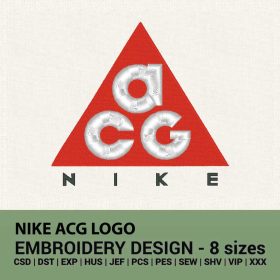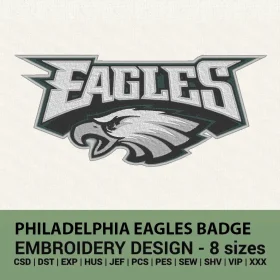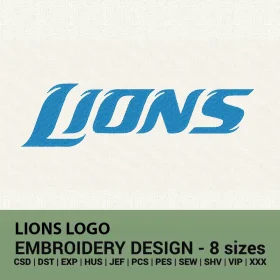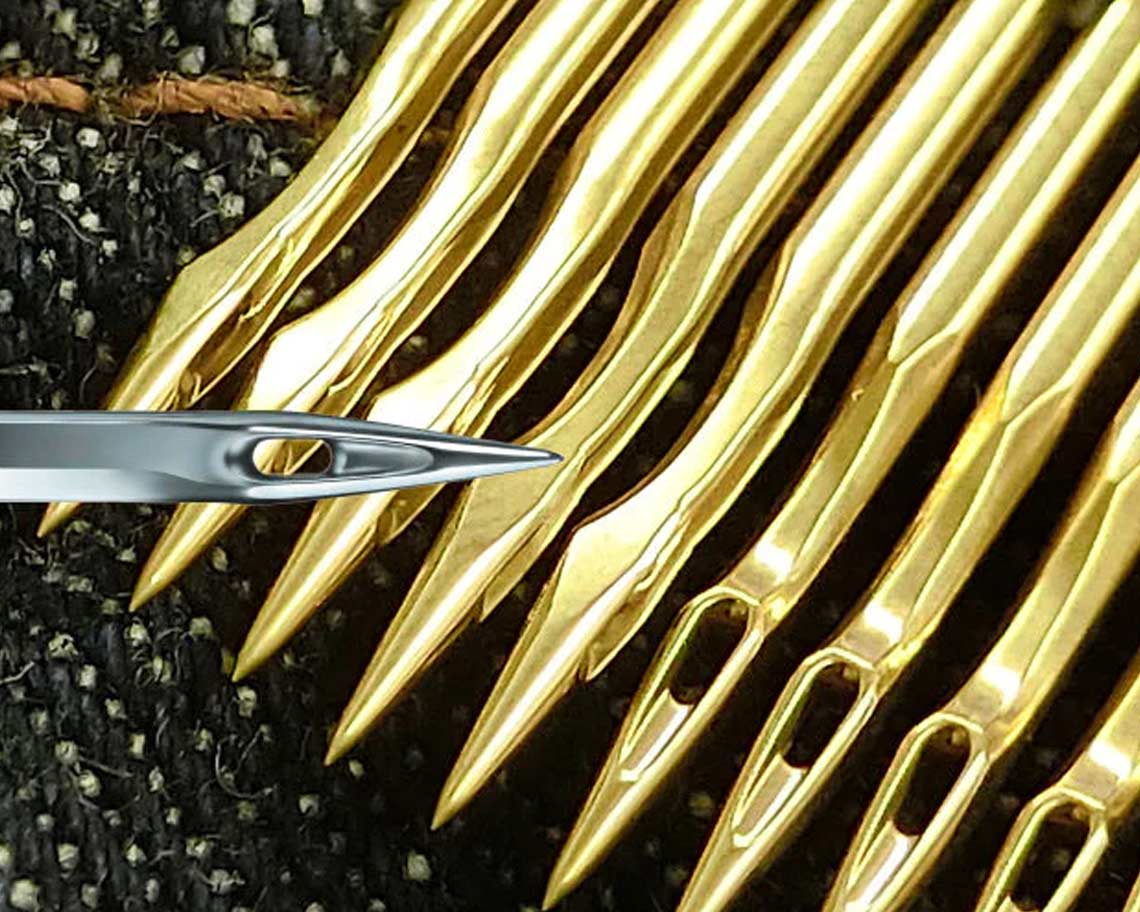
One of the things that affect the final embroidery design quality is the needle that you are using for your embroidery machine. Today I want to write about the needles – the types that exist in the market, the materials they are made from, and the tips on how to choose the right needle for your machine embroidery design.
So in this post, you will find
What types of machine embroidery needles exist?
What material needles to choose?
How to choose the right needle for your machine embroidery design?
What type of machine embroidery needles exists?
There are several types of machine embroidery needles available, each designed for a specific purpose. Here are some of the most common types of machine embroidery needles:
Universal Needles:
These are the most commonly used needles and are suitable for a wide range of fabrics. They have a slightly rounded point that helps prevent the needle from damaging delicate fabrics. Universal needles come in a range of sizes, with smaller sizes suitable for lighter-weight fabrics and larger sizes for heavier fabrics.
Ball Point Needles:
These needles are designed for knit fabrics, such as jersey, interlock, and stretch fabrics. They have a slightly rounded tip that allows them to slide between the knit fibers without damaging the fabric.
Sharp Needles:
Also known as Microtex needles, these needles have a very sharp point that makes them ideal for working with dense fabrics like leather, denim, or canvas. They are also suitable for working with fine fabrics like silk, satin, and organza.
Embroidery Needles:
These needles are specifically designed for machine embroidery and have a larger eye to accommodate the heavier threads used in embroidery. They are available in various sizes, with larger sizes suitable for thicker threads and smaller sizes for finer threads.
Metallic Needles:
These needles are designed for use with metallic and other specialty threads that can be difficult to work with. They have a larger eye that helps prevent the thread from breaking or shredding during embroidery.
Topstitch Needles:
These needles are designed for use with heavier threads and fabrics. They have a very large eye that can accommodate thick threads, making them ideal for decorative stitching and topstitching.
What material needle to choose?
Machine embroidery needles are typically made from high-quality steel or stainless steel, but they may also be coated with other materials to improve their performance. Here are some of the materials that machine embroidery needles may be made from:
Steel machine embroidery needles:
Steel needles are the most commonly used type of needle for machine embroidery. They are durable, strong, and reliable, making them ideal for a wide range of projects.
Stainless steel machine embroidery needles:
Stainless steel needles are a type of steel needle that is coated with a thin layer of chromium to prevent rusting. They are often used in high-humidity environments or for projects where the needle may be exposed to moisture.
Titanium machine embroidery needles:
Titanium-coated needles are designed to be extremely hard and durable, making them suitable for use with tough fabrics like leather or denim. They also offer improved needle stability and increased needle life.
Ceramic machine embroidery needles:
Ceramic needles are made from a high-tech ceramic material that is extremely hard and durable. They are designed to be resistant to wear and tear, making them ideal for use with tough fabrics like leather or canvas.
Teflon machine embroidery needles:
Teflon-coated needles are designed to prevent the needle from sticking to fabrics, making them ideal for use with materials like vinyl or leather. They also help to reduce friction and heat, which can help prolong the life of the needle.
Chrome machine embroidery needles:
Chrome-coated needles are designed to be extremely smooth and resistant to wear and tear. They are often used for high-speed embroidery machines or for projects that require a lot of stitching.
How to choose the right needle for your machine embroidery design?
It’s important to choose the right needle for your specific project to achieve the best results. By selecting the correct needle, you can ensure that your embroidery is beautiful, precise, and professional-looking.Choosing the correct machine embroidery needle is crucial for achieving the best results for your embroidery design. Here are some tips to help you choose the correct needle for your project:
Step1
Consider the fabric you’ll be embroidering on: The type of fabric you’re using will determine the type of needle you need. For example, if you’re embroidering on a delicate fabric like silk or organza, you’ll want to use a smaller needle with a sharp point, such as a size 70/10 or 75/11 needle. For heavier fabrics like denim or canvas, a larger needle with a stronger point, such as a size 90/14 or 100/16 needle, would be more suitable.
Step2
Consider the thread you’ll be using: Different types of thread require different types of needles. For example, metallic thread can be more difficult to work with and may require a larger eye in the needle to prevent shredding or breaking. You may want to consider using a specialized metallic needle for this type of thread.
Step 3
Consider the design elements: If your embroidery design has a lot of fine detail work, you may want to use a smaller needle to ensure that the details are captured. Conversely, if your design has larger, bolder elements, a larger needle may be more appropriate.
Step 4
Test your needle and thread combination: Before you start your embroidery project, it’s a good idea to test your needle and thread combination on a scrap piece of fabric to ensure that the needle is creating the desired effect. This can save you time and frustration in the long run.
In summary, when choosing the correct machine embroidery needle for your project, consider the fabric, thread, and design elements, and do some testing to ensure that you achieve the best results. With the right needle and a little practice, you’ll be able to create beautiful and professional-looking embroidered designs.
If you are looking for new embroidery designs take a look at these new arrivals or visit our shop
-
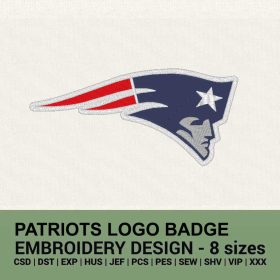 Patriots logo badge machine embroidery design instant downloadUSD 3.90 – USD 28.00
Patriots logo badge machine embroidery design instant downloadUSD 3.90 – USD 28.00 -
 Nike ACG logo machine embroidery design instant downloadUSD 3.90 – USD 28.00
Nike ACG logo machine embroidery design instant downloadUSD 3.90 – USD 28.00 -
 Philadelphia Eagles logo badge machine embroidery design instant downloadUSD 4.90 – USD 30.00
Philadelphia Eagles logo badge machine embroidery design instant downloadUSD 4.90 – USD 30.00 -
 Philadelphia Eagles badge machine embroidery design instant downloadUSD 4.50 – USD 29.00
Philadelphia Eagles badge machine embroidery design instant downloadUSD 4.50 – USD 29.00 -
 Lions logo classic machine embroidery designUSD 3.90 – USD 28.00
Lions logo classic machine embroidery designUSD 3.90 – USD 28.00

